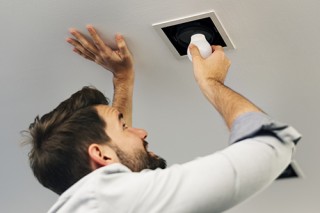Either you've heard it a hundred times or you've already made the switch – but somewhere along the way you've heard that you should switch to LED lightbulbs. In fact, LED bulbs have slowly taken over the market, with just over half of all light sources in the world being from LEDs.
There's a good chance you are already using at least some LEDs in your home, but sometimes you have to wonder – are LED lightbulbs always the right choice?
What is LED?
Eliminating Wasted Energy
One of the ways that fluorescent bulbs often wasted a lot of energy was by their heat output. Whether you've been burned touching a hot bulb or fixture, or baked fresh goods out of an Easy Bake oven as a kid you know that fluorescent and incandescent bulbs could get pretty hot . With LED bulbs, the heat output is significantly reduced, therefore eliminating unused energy, and keeping your fixtures room temperature.
Can I Put LEDs in Older Fixtures?
One of the main concerns is wondering whether or not you can use today's LED bulbs in older fixtures around the home. Well, if the fixture's socket is the right size for the bulb, then it is completely fine.
"Overlamping" warnings about using a bulb that is rated at a higher wattage than the lamp can safely accommodate do not apply to bulbs that use a lower wattage, as LEDs usually do. As LED bulb technology has progressed, the dimming range, brightness level, and now light color is completely customizable.
LED bulbs these days can transition to different levels of brightness with ease, and have outputs for all kinds of light, ranging from warm, white, and even RGB output. For more information on how to choose the lighting around your home, check out one of our blogs on home lighting to see the ways you can arrange offices, kitchens, and living rooms!
